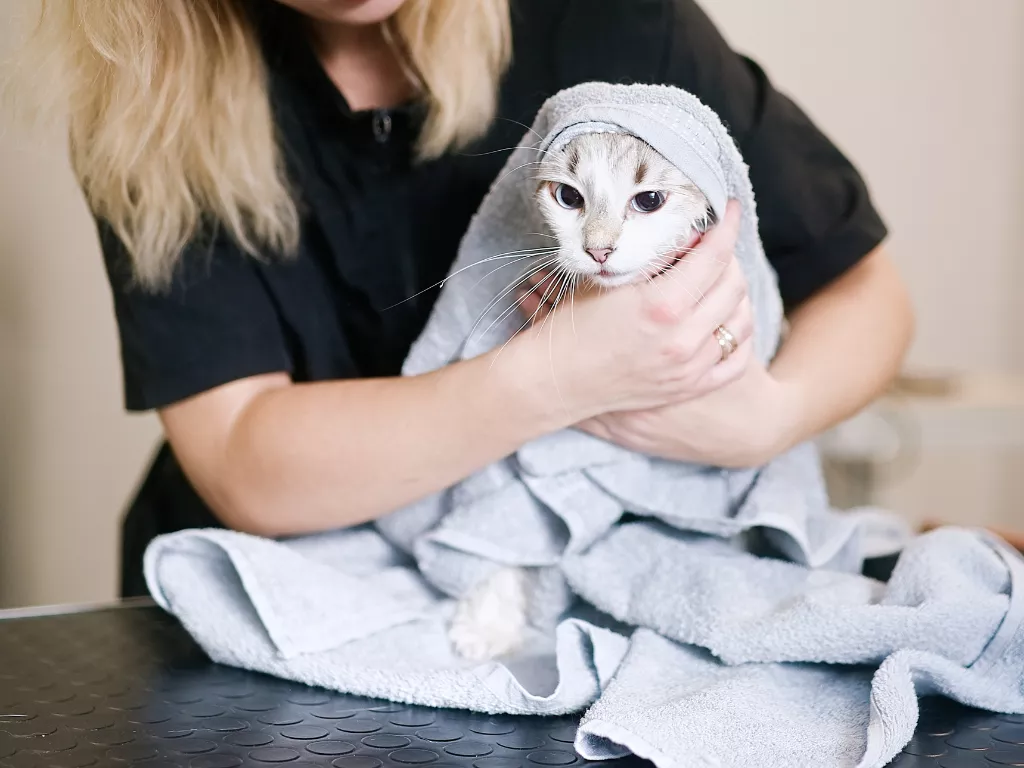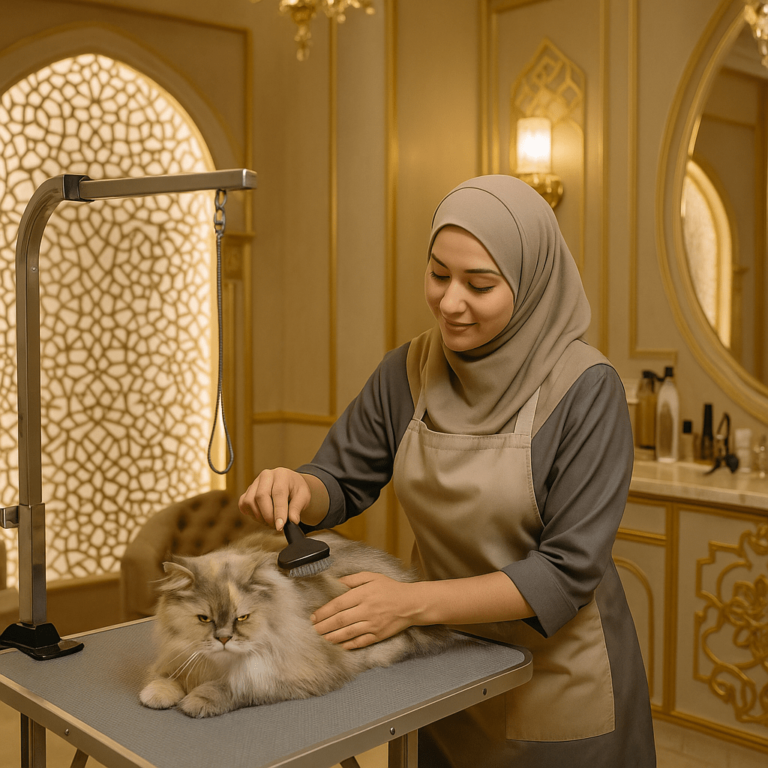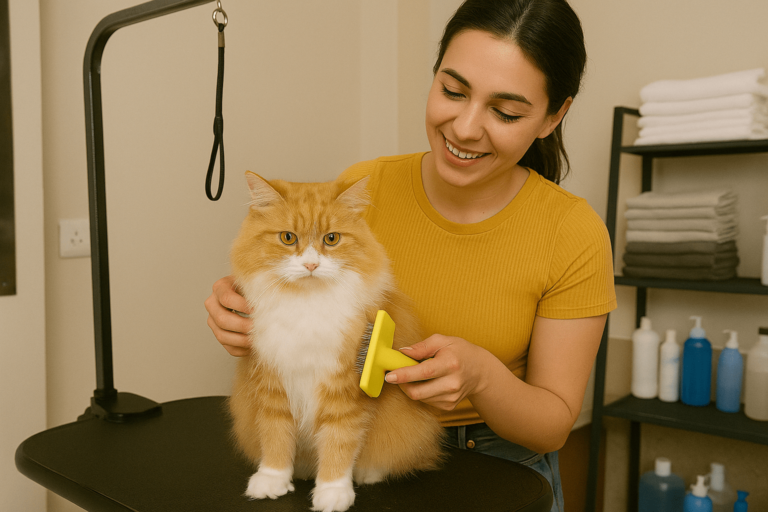
Usually spending hours grooming themselves, cats are noted for their cleanliness. Still, you are rather important for their grooming schedule as a conscientious cat owner. Along with making sure your cat companion looks their best, good grooming helps to preserve their general health and well-being. Whether you own a new cat or are an experienced pet parent, you really must have the proper cat grooming gear. This all-encompassing guide will coach you through the crucial grooming items you need to keep your cat happy and healthy.
Why Cat Grooming Is Crucially Important?
Though they are natural groomers, cats cannot do it on their own. Frequent grooming benefits:
- Especially long-haired cats are prone to mats and tangles.
- Regular brushing of your cat helps decrease shedding and lessens hairballs.
- Find Health Problems Early On: Grooming helps you to find early on skin issues, lumps, or parasites.
- Grooming sessions help you and your pet friend to get closer.
Basic Grooming Tools:
- Brushes and Combs
A pillar of cat maintenance is brushing. Your cat’s coat type will determine the kind of brush you need.
Perfect for eliminating loose fur and avoiding knots in long-haired cats is a slicker brush.
Perfect for short-haired cats to disperse natural oils and clean debris, Bristle Brush
Especially helpful during seasonal shedding, deshedding tools help to lower shedding by eliminating undercoat fur.
Designed to remove fleas, flea filth, and eggs while letting you check your cat’s coat, flea comb is a fine-toothed comb.
At least twice a week brushing your cat will help to maintain their coat in good condition and lower shedding. - Nail Clues
Maintaining the trim of your cat’s nails helps to avoid inadvertent scratches from their sharpness. It also lessens the possibility of nails invading their paw pads.
Easy to operate and ideal for novices are guillotine clippers.
Cats with stronger nails might find scissor clippers ideal.
Grinders give a nice finish for cats that reject conventional clippers.
How-To: Clip your cat’s nails every two to three weeks. Steer clear of cutting the pink spot in the nail with blood vessels and nerves, the quick. - Shampoo and Conditioner for Cats
Though they groom themselves, cats sometimes require a bath—especially if they come upon something sticky or contaminated.
Human shampoos can aggravate your cat’s skin, hence always use one designed for that purpose.
Perfect for cats with sensitive skin or allergies are hypoallergenic options.
Convenient for short cleanings without a complete bath are waterless shampoos.
Bathing Tip: Unless directed differently by a veterinarian, just bath your cat once every few months, just when needed. - Tools for Ear Cleaning
Keeping the ears of your cat clean is absolutely essential since dirty ears could cause infections.
Choose an ear cleaning product suitable for cats.
Pads or cotton balls should be used instead of cotton swabs since they could force trash more into the ear canal.
Before cleaning, see your veterinarian if your cat’s ears smell terrible, redish, or show too much wax. - Toothpaste andbrush
Though it’s equally as crucial as combing their coat, oral hygiene is sometimes neglected in cats.
Best is a compact, soft-bristled toothbrush meant for pets.
Human toothpaste should never be used on cats since it may be poisonous. Choose a taste they will enjoy—perhaps chicken or fish.
To avoid dental disease and plaque, at least three times a week brush your cat’s teeth. - Grooming wipes
Quick touch-ups call for grooming wipes. Cleaning your cat’s paws, face, or fur between bathing will find them particularly helpful.
Safe for delicate skin are hypoallergenic wipes.
Wipes for Deodorizing: Keep your pet smelling great. - Hairball Corrections
While brushing your cat helps to lessen hairballs, many cats still have regular problems with them. Pastes or chews designed to help hair pass the digestive system smoothly make up hairball treatments. - Grooming Table or Matrix
Your cat will be safe and comfortable on a designated grooming surface during sessions. Search for pet grooming-specific non-slip mats or tables. - Gloved Shedding
Grooming gloves are a great substitute for brushes for dogs that hate them. They remove loose fur and trash, then replicate petting.
Extra Advice on Cat Grooming
- Start Early: To assist your cat adjust to the process, start grooming them while they are a kitten if at all feasible.
- Be gentle: move slowly and softly to prevent frightening your cat.
- Celebrate Your Cat: Grooming sessions should be fun using treats or compliments.
- Observe the behavior of your cat: if they look agitated or stressed, stop and try once more later.
- See a professional groomer or a service: focusing in Cat Grooming Dubai if grooming gets too difficult.
Establishing a Grooming Schedule
Having the correct tools is only half the story. Just as crucial is developing a consistent grooming schedule catered to the demands of your cat. This is a basic guide:
- For short-haired kitties, once or twice a week is plenty. Daily brushing could be required of long-haired cats.
- Keep an eye on nail development and trim as necessary monthly.
- Bathe your pet just when absolutely required.
- Long-term health of your cat depends on consistent brushing of her teeth.
In summary
Purchasing appropriate grooming tools guarantees your cat’s health and happiness in addition to simplifying the process. From brushes to nail clippers and ear cleaning tools, having these basics on hand will enable you keep a clean, healthy, and well-groomed feline pet.
Professional grooming services can be a terrific choice if you live in Dubai to provide your cat the TLC they so deserve. Whether you decide to groom your cat at home or see a professional, always give comfort and well-being top priority. Grooming may become a bonding exercise you and your cat look forward to with time and the correct tools.





